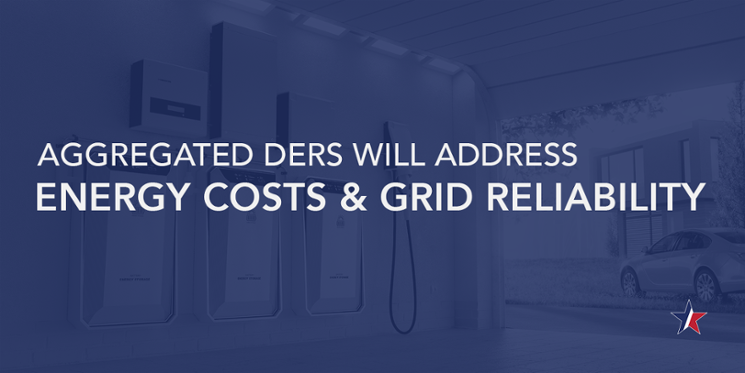
In Texas, regulators and stakeholders are paving the way to a cleaner, more reliable future with a pilot project that puts flexible energy resources at the forefront of the state’s grid planning efforts. Following a months-long effort involving industry stakeholders and state regulators, the Electric Reliability Council of Texas (ERCOT) voted unanimously on November 3 to greenlight a pilot project that will allow residential participants to receive compensation for their contributions to the state’s electrical grid.
This Aggregated Distributed Energy Resources Pilot Project represents a major win for advanced energy technologies in the state, making use of their cutting edge capabilities to address a number of issues related to high energy costs and grid reliability felt acutely by Texans in recent years. Distributed energy resources, or DERs, are technologies such as rooftop solar, batteries, smart home appliances, electric vehicles, microgrids, backup power systems, and energy efficiency measures that are installed behind a customer’s meter. DERs can reduce energy demand, offset electricity bills, and keep electricity flowing – even under extreme conditions.
This pilot seeks to harness the power of these distributed resources in combinations, or “aggregations,” so that they can respond to signals from grid operators to either reduce energy usage or provide power to the grid on a significant scale at any given moment. The ability of these aggregations to respond to grid conditions means they can contribute significantly to system reliability – a central concern in Texas following Winter Storm Uri and a summer marked by high outage risk.
Aggregations like those being tested in this pilot can also be understood as virtual power plants (VPPs), systems that remotely coordinate controllable small-scale power sources to provide quick-response services like peak load reduction or injection of electricity into the grid. By making these aggregations (or VPPs) – and therefore the owners of these distributed resources – eligible for compensation according to their contributions to the grid, participants are set to see significant reductions to their energy bills. While the first phase of this pilot will be limited to 80 MW, language in its recently approved governing document promises growth in both size (in terms of number of participants) and scope (in terms of eligible resources and avenues for compensation) upon the achievement of Phase I milestones.
The successful design and facilitation of this pilot program have received broad praise from market participants and exemplify the tremendous value of collaborative processes that leverage the expertise of diverse stakeholders. Led by Public Utility Commissioners Will McAdams and Jimmy Glotfelty, initial stages of the pilot development process were marked by the formation of a guiding task force consisting of representatives from the DER sector, transmission and distribution utilities, trade organizations, consumer advocates, and retail electric providers, all working in tandem with grid operation experts at ERCOT. TAEBA and several AEE member companies are proud to have been selected to participate in this task force, and we look forward to continuing this work in the months to come.
The Public Utilities Commission is now accepting applications from interested retail electric providers, aggregators, and companies active in the DER space with the goal of launching the pilot in early 2023. As stated by Amy Heart of AEE member company Sunrun, reflecting on her experience as a Task Force participant, “other states facing supply capacity constraints, high energy prices, and increased outages can, and should, replicate this model in developing a DER solution through quick, effective collaboration with clear goals in mind.” While many questions remain to be answered as the pilot moves forward, Texans can be proud of the trailblazing role their state is playing, and AEE will closely follow this project and look for ways that learnings from it can be applied elsewhere around the country.
To learn more about what DERs can do for the Texas power grid and the customers who depend on it, download the TAEBA report, "Future Proofing the Texas Grid with Distributed Energy Resources," by clicking below.

